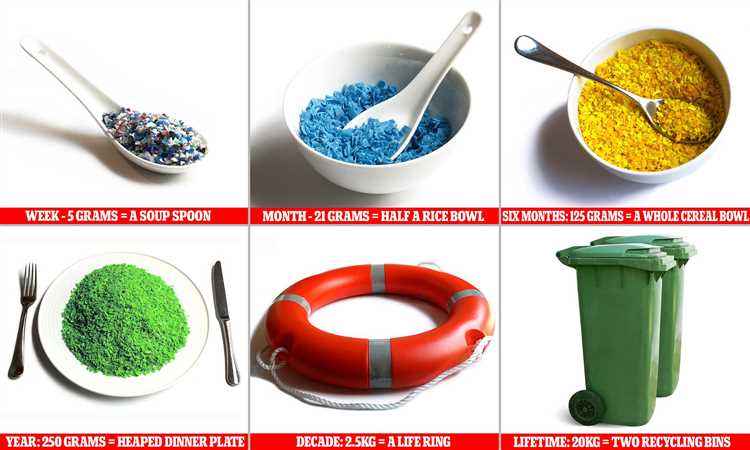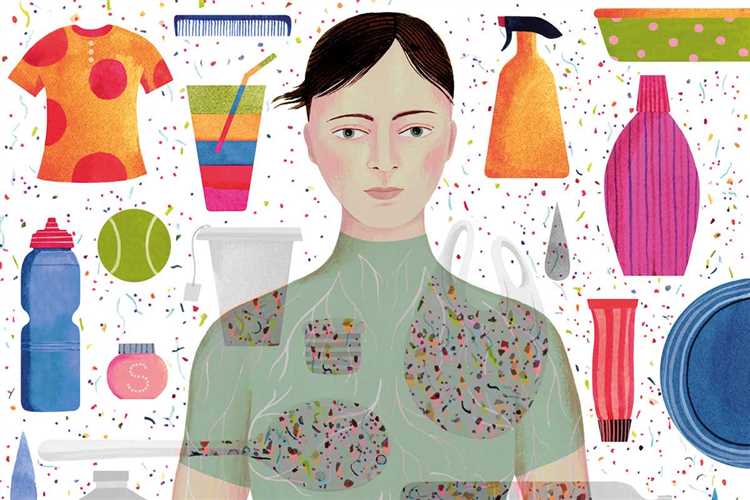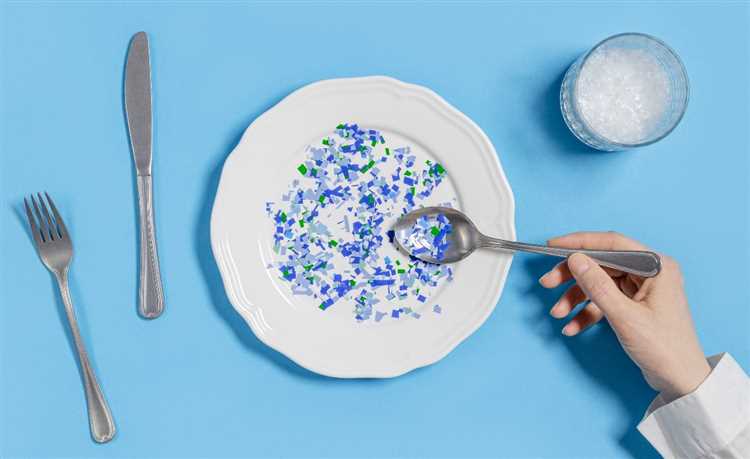
Microplastics are tiny plastic particles less than 5 millimeters in size that are found in our environment, including in our water, air, and soil. They are created through the breakdown of larger plastics, such as packaging materials, and can also be released directly into the environment through the use of personal care products and washing synthetic clothing.
But are microplastics also making their way into our food? This is a question that has garnered significant attention in recent years, as concerns about the potential health risks associated with consuming microplastics have grown.
Studies have shown that microplastics have been found in a variety of food items, including seafood, honey, salt, and even beer. The presence of microplastics in these foods is thought to be the result of contamination during processing or packaging, as well as through environmental pollution. This means that we could be unknowingly ingesting microplastics on a daily basis.
The impact of consuming microplastics on human health is still not fully understood. While some studies have indicated that microplastics can cause inflammation and damage to organs in lab animals, more research is needed to determine the potential long-term effects on human health. In the meantime, it is important to continue studying the sources and impacts of microplastics in our food in order to mitigate any potential risks.
- The Impact of Microplastics on Our Food
- Understanding Microplastics and Their Presence in Food
- How do Microplastics Enter the Food Chain?
- What are the Potential Health Risks?
- Potential Health Risks Associated with Ingesting Microplastics
- 1. Toxicological Effects
- 2. Inflammatory Responses
- 3. Disruption of Gut Microbiome
- Microplastics in Different Food Sources
- Seafood
- Drinking Water
- Regulations and Guidelines to Address Microplastic Contamination
- Government Regulations
- Industry Guidelines
- Research and Monitoring
- Steps to Reduce Microplastic Pollution in Our Food
- 1. Raise awareness
- 2. Improve waste management
- 3. Encourage sustainable alternatives
- 4. Tighten regulations on microplastic use and production
- 5. Support research and innovation
- Q&A:
- What are microplastics?
- How do microplastics end up in our food?
- Are microplastics harmful to our health?
- Can we avoid consuming microplastics?
- What is being done to address the issue of microplastics in our food?
- What are microplastics?
The Impact of Microplastics on Our Food
Microplastics are tiny plastic particles, typically less than 5 millimeters in size, that have become a major concern for our food chain. These particles are found in various sources such as single-use plastics, synthetic textiles, and personal care products, and enter our environment through improper disposal or accidental release.
Once in the environment, microplastics can be transported through water, air, and soil. They are often mistaken for food by marine animals and can enter the food web, eventually reaching humans through the consumption of seafood.
The presence of microplastics in our food has raised concerns about potential health risks. Studies have shown that microplastics can accumulate in the gastrointestinal tract and may cause inflammation and oxidative stress. Additionally, these particles have the potential to transfer chemical additives and other contaminants that they have absorbed, such as heavy metals and persistent organic pollutants.
While the full extent of the health effects of microplastics in our food is still being studied, it is clear that the presence of these particles in our food chain is a cause for concern. Efforts are being made to reduce the use of single-use plastics and find alternative materials, as well as improve waste management practices to prevent the release of microplastics into the environment.
In conclusion, microplastics have a significant impact on our food chain. The potential health risks associated with their consumption underline the urgent need for further research and action to mitigate their presence in our environment and food sources.
Understanding Microplastics and Their Presence in Food
Microplastics are small plastic particles that are less than 5 millimeters in size. They can be found in a variety of products, including personal care products, cleaning agents, and even synthetic clothing. These particles are so small that they often go unnoticed, but their presence in the environment and in our food has become a growing concern.
How do Microplastics Enter the Food Chain?
Microplastics can enter the food chain through various pathways. One way is through the contamination of water sources, such as rivers and oceans, where plastic waste accumulates. Marine animals may mistake these particles for food and consume them, leading to their transfer up the food chain. Additionally, microplastics can be released into the air from everyday activities, such as tire wear and the breakdown of plastic packaging, and then deposit onto plants and other agricultural crops. When these crops are consumed by animals or humans, the microplastics can enter their bodies.
What are the Potential Health Risks?
The impact of microplastics on human health is not yet fully understood, but studies have shown that they can cause harm to marine life, leading to concerns about their potential effects on humans. Some studies have suggested that microplastics may contain harmful chemicals or act as carriers for other pollutants, which could be transferred to humans when ingested. Additionally, the small size of microplastics allows them to penetrate tissues and potentially cause inflammation or other adverse effects.
Scientists are still working to determine the extent of the risks and effects of microplastics on human health. However, reducing plastic waste and developing more sustainable packaging and products can help minimize the presence of microplastics in our food and the environment.
Potential Health Risks Associated with Ingesting Microplastics
As the prevalence of microplastics in our environment and food continues to increase, concerns about potential health risks have also grown. While the full extent of the health impacts is not yet fully understood, various studies have raised alarming possibilities that warrant further investigation.
1. Toxicological Effects
Microplastics can act as carriers for toxic chemicals, such as pesticides and industrial pollutants. When ingested, these chemicals can leach into the body and potentially cause various adverse effects, including organ damage, reproductive issues, and even cancer. The long-term implications of chronic exposure to these toxins are a growing concern for public health.
2. Inflammatory Responses
Research has suggested that microplastics may trigger inflammatory responses in the body. These tiny particles can cause irritation and damage to various organs, leading to chronic inflammation. Prolonged inflammation has been linked to numerous health problems, including cardiovascular disease, diabetes, and respiratory issues.
3. Disruption of Gut Microbiome
The gut microbiome plays a crucial role in maintaining overall health, and any disruption to its balance can have far-reaching consequences. Studies have found that microplastics can alter the composition and diversity of the gut microbiome, potentially affecting digestion, metabolism, and immune function.
- Microplastics have been shown to interfere with the growth of beneficial gut bacteria, leading to an imbalance.
- This imbalance may increase the risk of gastrointestinal disorders, autoimmune diseases, and metabolic disorders.
- Furthermore, microplastics can accumulate in the gut lining, impairing nutrient absorption and exacerbating nutrient deficiencies.
It is important to note that while these potential health risks associated with ingesting microplastics are concerning, more research is needed to fully understand the extent of their impact on human health. However, the available evidence suggests that minimizing our exposure to microplastics in food should be a priority for both individuals and policymakers.
Microplastics in Different Food Sources
Microplastics, tiny plastic particles less than 5 millimeters in size, have been found in various food sources, raising concerns about the potential risks they pose to human health. These particles are often released into the environment through the fragmentation of larger plastic items and can be ingested by marine animals, which then enter the food chain.
Seafood
Seafood, such as fish and shellfish, is a common source of microplastics contamination. Studies have shown that microplastics can accumulate in the digestive tracts of these animals. When consumed, these contaminated seafood products can introduce microplastics into the human diet.
Drinking Water
Microplastics have also been found in drinking water sources, such as tap water and bottled water. These particles can come from various sources, including the shedding of microfibers from synthetic textiles, the breakdown of plastic bottles, and the degradation of larger plastic waste. Although the levels of microplastics in drinking water are generally low, the cumulative effect of long-term exposure is still a concern.
Other Food Sources
In addition to seafood and drinking water, microplastics have been detected in other food sources, including salt, honey, and even beer. These particles can enter the environment through various pathways, such as air and water pollution, and can contaminate the crops and animals that serve as food sources.
It is important to note that the health implications of consuming microplastics in food are still not well understood. While some studies suggest potential risks, further research is needed to fully assess the impact of microplastic ingestion on human health. Nonetheless, efforts should be made to reduce the release and exposure of microplastics in order to safeguard our food sources and overall well-being.
Regulations and Guidelines to Address Microplastic Contamination

As the issue of microplastic contamination in our food supply gains more attention, regulatory bodies and organizations have started to develop guidelines and regulations to address this problem. These regulations aim to reduce the presence of microplastics in food and ensure consumer safety.
Government Regulations
Several governments have recognized the importance of addressing microplastic contamination and have introduced regulations to control its occurrence. For example, the European Union has set limits on the presence of certain types of microplastics in food products. These limits are based on scientific evidence and aim to minimize exposure to harmful microplastics.
Other countries, such as the United States and Canada, are also taking action to regulate microplastics in food. They are conducting research to better understand the potential risks and develop appropriate regulations to protect consumer health.
Industry Guidelines
In addition to government regulations, industry organizations are also working to address the issue of microplastic contamination. These organizations have developed guidelines and best practices for the manufacturing, processing, and packaging of food products to minimize the introduction of microplastics.
These guidelines include recommendations for using alternative packaging materials, implementing effective filtration systems, and improving waste management practices. The goal is to prevent the release of microplastics into the environment and reduce their presence in food products.
- Use of biodegradable and compostable packaging materials
- Implementation of filtration systems to remove microplastics from water sources
- Improved waste management practices to minimize the release of microplastics
Research and Monitoring
Efforts are also being made to increase research and monitoring of microplastic contamination in the food supply. This research aims to better understand the sources and pathways of microplastics, as well as their potential health effects.
By conducting regular monitoring and analysis, scientists and regulatory bodies can assess the effectiveness of regulations and guidelines in reducing microplastic contamination. They can also identify emerging risks and adapt regulations accordingly.
Overall, regulations and guidelines are crucial in addressing the issue of microplastic contamination in our food. They provide a framework for action and help ensure that steps are taken to protect consumer health and reduce the environmental impact of microplastics.
Steps to Reduce Microplastic Pollution in Our Food
Microplastic pollution has become a growing concern, as it has been found in various sources of our food, including seafood, bottled water, and even salt. To address this issue and reduce microplastic contamination in our food, several steps can be taken:
1. Raise awareness
Education and awareness play a crucial role in tackling microplastic pollution in our food. By spreading information about the potential risks and impacts of microplastics, individuals can make more informed choices and take steps to minimize their exposure. Governments, organizations, and the media can play a significant role in raising awareness through campaigns, documentaries, and news articles.
2. Improve waste management

Proper waste management is essential in preventing microplastics from entering the environment and, subsequently, our food chain. Governments should implement and enforce stringent waste management practices, including proper disposal and recycling of plastics. Innovations in waste management technologies, such as improved filtration systems in wastewater treatment plants, can also help reduce the release of microplastics into our water sources.
3. Encourage sustainable alternatives
Reducing plastic consumption is one of the most effective ways to prevent microplastic pollution. Governments and businesses should promote and incentivize the use of sustainable alternatives to single-use plastics. This could include promoting reusable bags, encouraging the use of biodegradable packaging materials, and supporting research and development of eco-friendly alternatives to plastic products.
4. Tighten regulations on microplastic use and production
Stricter regulations on the use and production of microplastics can help limit their release into the environment. Governments should collaborate with industries to set limits on the use of microplastics in consumer products and encourage the development of safer alternatives. Additionally, monitoring and enforcing these regulations are essential to ensure compliance and accountability.
5. Support research and innovation
Continued research is crucial to understanding the full extent of microplastic pollution and its impacts on human health. Governments, funding agencies, and organizations should invest in research to identify effective mitigation strategies, develop advanced detection methods, and explore new technologies to remove microplastics from the environment. This research can help inform policies and practices that will lead to long-term solutions for reducing microplastic pollution in our food.
By taking a multi-faceted approach that includes raising awareness, improving waste management, encouraging sustainable alternatives, tightening regulations, and supporting research and innovation, we can make significant progress in reducing microplastic pollution in our food. It is essential for stakeholders at all levels to collaborate and take action to protect our health and the environment from the impacts of microplastics.
Q&A:
What are microplastics?
Microplastics are tiny particles of plastic, usually smaller than 5 millimeters in length. They can come from a variety of sources, including the breakdown of larger plastic items, textiles, and cosmetics.
How do microplastics end up in our food?
Microplastics can enter the food chain through various routes. They can be ingested by marine animals, which are then consumed by humans. Microplastics can also contaminate water and soil, which can then be taken up by plants or animals that we eat.
Are microplastics harmful to our health?
There is still a lot of debate and research being conducted on the potential health effects of microplastics. Some studies have suggested that exposure to high levels of microplastics could have negative impacts on human health, such as inflammation and damage to organs. However, more research is needed to fully understand the risks.
Can we avoid consuming microplastics?
It is difficult to completely avoid consuming microplastics, as they have become pervasive in the environment. However, there are steps you can take to minimize your exposure. These include reducing your use of single-use plastics, choosing natural fibers over synthetic ones, and eating a diet rich in fresh, unprocessed foods.
What is being done to address the issue of microplastics in our food?
Researchers, policymakers, and industry leaders are actively working to address the issue of microplastics in our food. This includes developing more sensitive detection methods, implementing regulations on plastic waste and pollution, and promoting sustainable practices and alternatives to plastics.
What are microplastics?
Microplastics are tiny particles of plastic that are less than 5mm in size. They can come from a variety of sources, including microbeads in personal care products, fragments from larger plastic items that have broken down over time, and synthetic fibers from clothing.